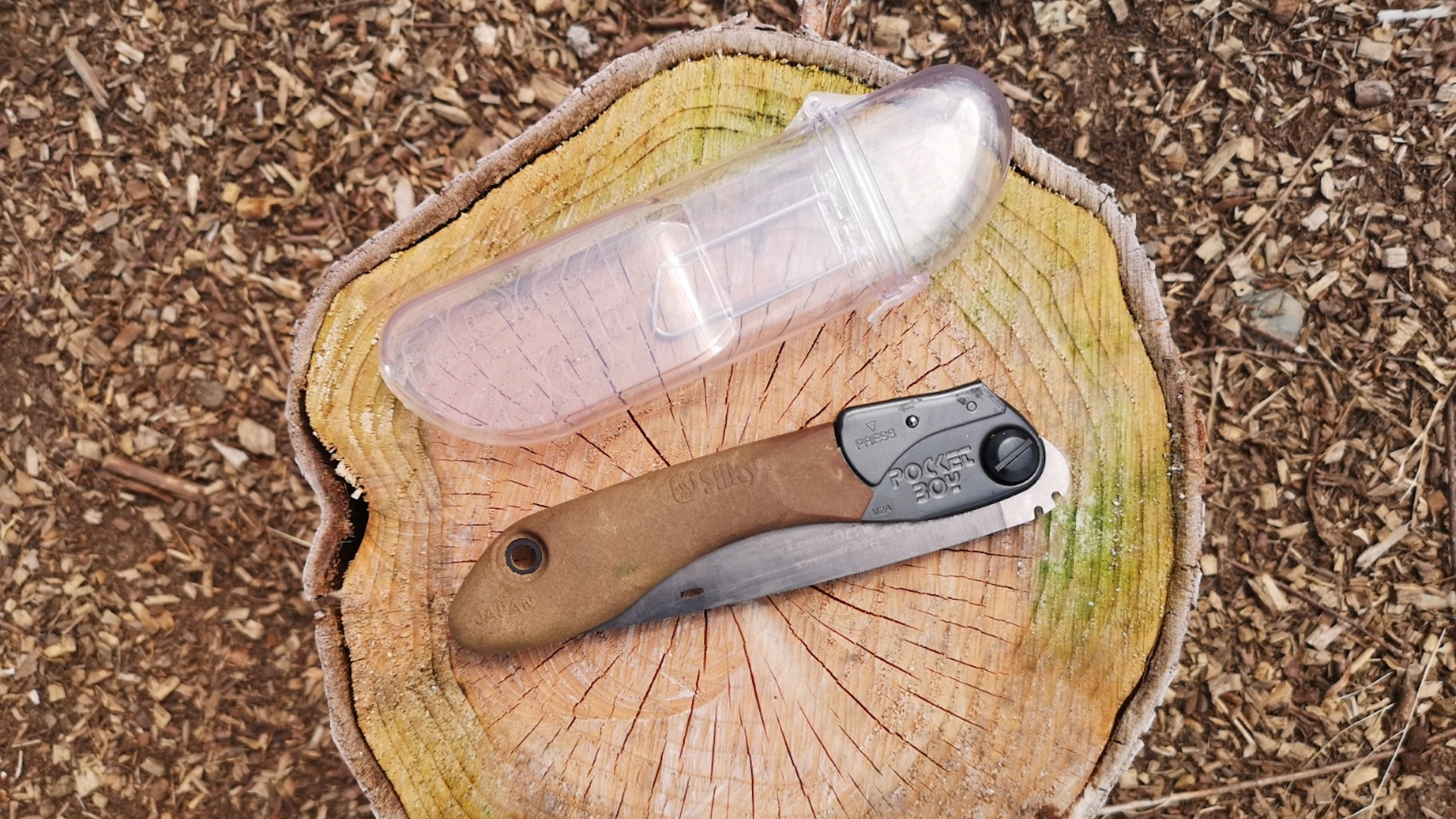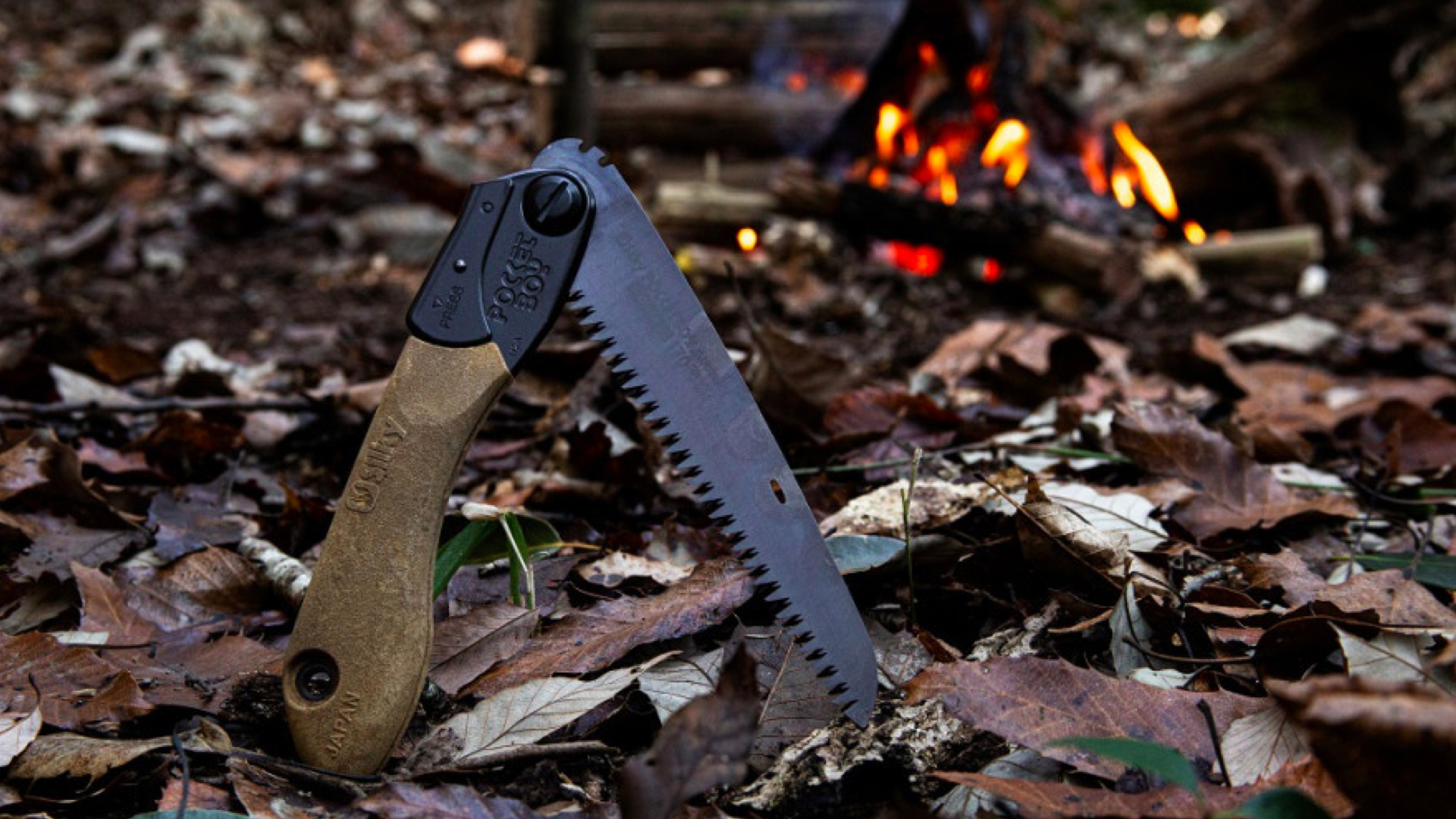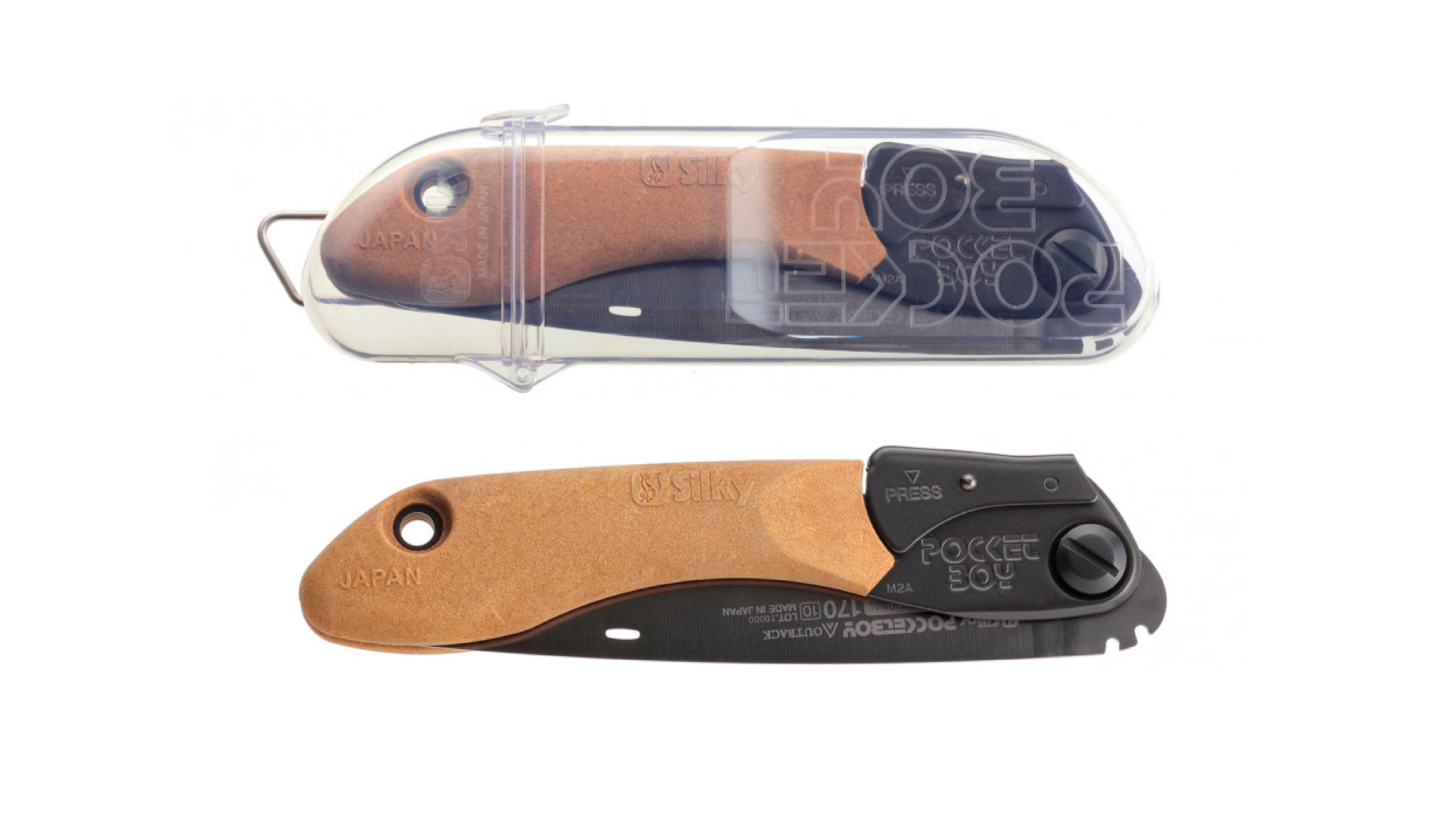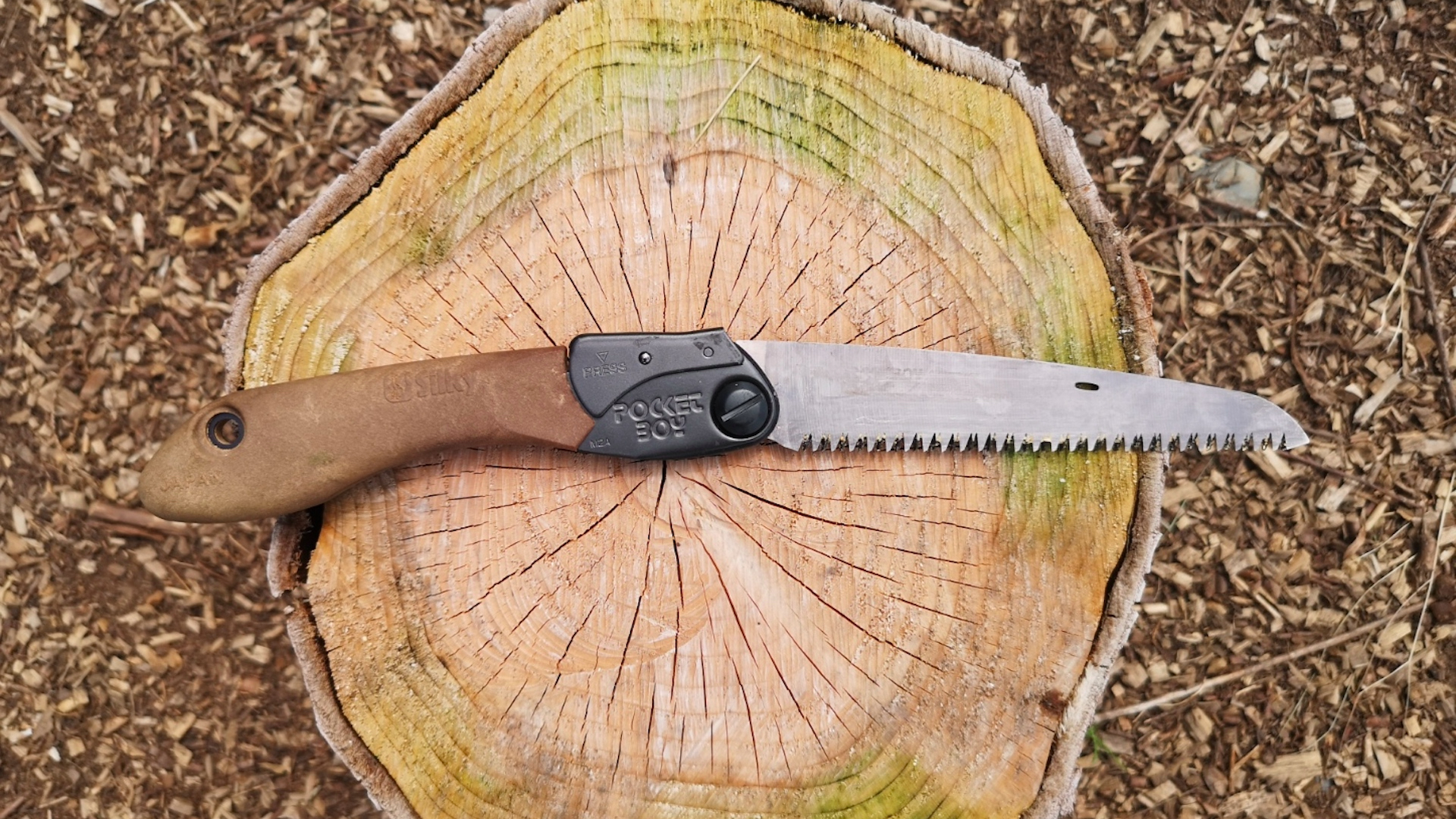Advnture Verdict
With its robust build and wickedly efficient cutting blade, this Silky saw has both the heft and grunt to cut through green or deadwood, as well as bone and almost anything else that stands in your way. Yet it’s still very compact, slipping easily into a pocket or pack.
Pros
- +
Compact
- +
Sturdy and robust
- +
Blade can be locked in two positions
- +
Versatile blade profile
- +
Supplied with protective hard case
Cons
- -
Fractionally heavier than its rivals
- -
Finer teeth means blade can occasionally clog
- -
Doesn’t lock in closed position
You can trust Advnture
Silky PocketBoy 170 Outback Edition: first impressions
The Silky PocketBoy 170 Outback Edition has an impressive heritage. When it comes to steel blades, one nation’s reputation for superior craftsmanship and expertise arguably stands above all others: Japan. And though we’re testing saws here, not samurai swords, Silky is a company with serious pedigree.
Established by Katsuji Miyawaki in Kishi, Japan back in 1919, Silky soon built an enviable reputation for crafting well-designed, high-quality saws. In 1970, they were amongst the first to adopt the newly invented automatic saw-setting machine, which marked a sea change in the development of modern saw manufacturing. A decade on, Silky created and patented their own proprietary saw-setting process, which resulted in a remarkable improvement in blade sharpness. Then in 1985, they introduced the Gomboy, a folding saw with a rubber-clad handle that became the forerunner of almost all modern pruning-style saws (which are often referred to as “Japanese saws” to this day).
The Pocketboy is essentially the Gomboy’s little brother, designed to be even more compact and versatile. This special Outback Edition has been upgraded with a thicker and more rigid saw blade to better survive the demands and rigors of bushcraft. The premium Japanese steel is coated in a compound of nickel and tin, which is designed to prolong blade life and improve cutting performance in multiple materials including wood and bone. It’s a dark, non-reflective gunmetal color, which also gives the saw a tactical look that doesn’t glint or dazzle in bright sunlight.
But how did it fare under test conditions for our best camping saw buying guide? Read on…

The locking blade folds fully into the handle, completely concealing both teeth and point. A blade notch also ensures it’s easy to deploy the saw, even when wearing your best hiking gloves, which is a thoughtful touch that shows this is a saw designed to be used year-round and in cold-weather environments.
The lever lock and frame are made from pressed steel, while the handle is made of an unusual wood/plastic composite, which is warm and tactile. It’s a bit less forgiving in the palm than the softer plastic and rubber grips of other saws but offers more secure control when covered in grease and moisture, whether rain or sweat. It’s finished with a lanyard hole, though no lanyard is actually provided – so it’s probably worth adding a loop of paracord or a leather thong if you’re going to be pulling this out of your pocket frequently.
Unlike most other saws, the Pocketboy Outback comes with a hard case made from transparent plastic with a metal belt loop, which works well for long-term storage, protecting the tool quite well when not in use. For us, it’s a little flimsy to take into the great outdoors though, as it would be relatively easy to crack or shatter the case.
All the latest inspiration, tips and guides to help you plan your next Advnture!
• RRP: $60 (US) / £45 (UK)
• Weight: 243g / 8.6oz
• Blade length: 17cm / 6.5in
• Overall length: 37cm / 14.5in
• Closed length: 21cm / 8.25in
• Teeth per inch: 9
• Blade: Coated Japanese steel
• Lanyard: Plastic carry case
Silky PocketBoy 170 Outback Edition: in the field

The Pocketboy is fitted with a 170mm blade, featuring triple-ground blade toothing. It has nine teeth per inch (TPI), which Silky class as a medium blade. This is their most versatile saw – it will rip through wood and bone quickly but has enough teeth to bite immediately into smooth surfaces, without bouncing or jumping out of the cut.
We found that it works really well in both green or seasoned wood (do you know the best trees for firewood?), and though you need a few more strokes than some saws, cutting speed is still impressive. In fact, cutting performance is only really limited by the relatively short blade length. The curved grip is comfortable to hold too, and the handle has a pronounced butt to stop it from slipping out of your hand. This is a saw that can do serious and prolonged work without giving you hotspots or blisters.

The other feature that makes this an extremely versatile saw is the fact that the blade can be locked in two positions – parallel with the base of the handle or slightly beyond vertical. The latter position gives you some useful extra clearance for the hand, ideal for working in tight spaces or thick, tangled branches. It doesn’t lock in the closed position, but this is a benefit is some scenarios, as it makes it quicker to deploy the Pocketboy’s blade.
In terms of drawbacks, we did occasionally manage to accidentally depress the lever lock, which will cause the blade to disengage backwards. As soon as you get familiar with using the Pocketboy, it’s a quirk that’s easily avoided – just wrap your thumb around the handle rather than keeping it on the spine of the saw. The only other area in which the Pocketboy loses out is weight: it’s a little heavier than other similarly-sized saws. On the other hand, that added heft can be useful, and reflects the robust construction and materials. There are no flimsy plastic parts here.
Overall, this feels like a serious tool built for serious outdoor use. In terms of durability, the build quality is a notch above anything else we tested – though that’s also reflected in the higher price. But if you need a dependable workhorse for camping, hunting or to add to your survival gear, the Silky is more than fit for purpose.
An outdoors writer and editor, Matt Jones has been testing kit in the field for nearly a decade. Having worked for both the Ramblers and the Scouts, he knows one or two things about walking and camping, and loves all things adventure, particularly long-distance backpacking, wild camping and climbing mountains – especially in Wales. He’s based in Snowdonia and last year thru-hiked the Cambrian Way, which runs for 298 miles from Cardiff to Conwy, with a total ascent of 73,700 feet – that’s nearly 2½ times the height of Everest. Follow Matt on Instagram and Twitter.


